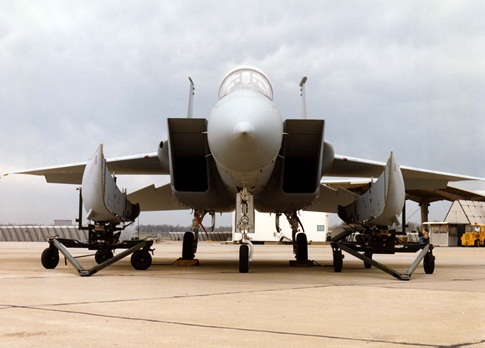Defense Department Adds Direct Digital Manufacturing to its Arsenal
 Over the course of the 20th century, the US radically transformed its defense industrial base. But thanks to a technological breakthrough, the changes aren't over yet. By using computer-aided design (CAD) files to guide the fabrication of parts, manufactures may be paving the way for a new era in defense design: direct digital manufacturing (DDM).
Over the course of the 20th century, the US radically transformed its defense industrial base. But thanks to a technological breakthrough, the changes aren't over yet. By using computer-aided design (CAD) files to guide the fabrication of parts, manufactures may be paving the way for a new era in defense design: direct digital manufacturing (DDM).
Until now, DDM methods, including fused deposition modeling, stereo-lithography, and selective laser sintering, have been used for the fabrication of hard-to-find replacement parts. Now they may be at a point where an entire system (such as a weapon or an aircraft) can be produced in whole, rather than in part, using 3D printing technology.
While this technology allows manufacturers to dramatically reduce the time spent simulating and testing new products by using digital mockups in a virtual environment, this is not the only way in which DDM proves faster than defense design alternatives. For example, if a design ever needs to be changed or upgraded, the entire manufacturing line need not be altered, only the design itself.
Two additional advantages of DDM that make it especially attractive for the production of military equipment are its ability to produce organic forms (shapes featuring curves rather than geometric lines and angles) and its energy and material efficiency. Not only does this spell potential savings for a vast array of defense designs, but it could also enable the creation of aircraft with more advanced stealth technology and energy efficiency.
While research projects within the Department of Defense are set to implement DDM, it is unclear whether it will be adopted in the long-term. One roadblock is the safety and certification of products in comparison to their traditionally manufactured counterparts.
However, if adopted, manufacturing may undergo a substantial shift toward real-time production that occurs on-site and as it is needed, allowing for highly efficient and flexible defense industrial bases. But unless sufficient innovation occurs, this technology may leave the hands of the military, its initial source of funding, in favor of the public sector, where it is already beginning to make significant gains including the development of new applications ranging all the way from printing cars to entire concrete buildings.
Full story at Brookings










